 Weird Stuff
Weird Stuff  Weird Stuff
Weird Stuff  Our World
Our World 10 Ways Your Christmas Tree Is More Lit Than You Think
 Movies and TV
Movies and TV The 10 Coolest Stars to Set Sail on The Love Boat
 History
History 10 Things You Didn’t Know About the American National Anthem
 Technology
Technology Top 10 Everyday Tech Buzzwords That Hide a Darker Past
 Humans
Humans 10 Everyday Human Behaviors That Are Actually Survival Instincts
 Animals
Animals 10 Animals That Humiliated and Harmed Historical Leaders
 History
History 10 Most Influential Protests in Modern History
 Creepy
Creepy 10 More Representations of Death from Myth, Legend, and Folktale
 Technology
Technology 10 Scientific Breakthroughs of 2025 That’ll Change Everything
 Weird Stuff
Weird Stuff Ten Bizarre Facts About The Doge Meme
 Our World
Our World 10 Ways Your Christmas Tree Is More Lit Than You Think
 Movies and TV
Movies and TV The 10 Coolest Stars to Set Sail on The Love Boat
Who's Behind Listverse?

Jamie Frater
Head Editor
Jamie founded Listverse due to an insatiable desire to share fascinating, obscure, and bizarre facts. He has been a guest speaker on numerous national radio and television stations and is a five time published author.
More About Us History
History 10 Things You Didn’t Know About the American National Anthem
 Technology
Technology Top 10 Everyday Tech Buzzwords That Hide a Darker Past
 Humans
Humans 10 Everyday Human Behaviors That Are Actually Survival Instincts
 Animals
Animals 10 Animals That Humiliated and Harmed Historical Leaders
 History
History 10 Most Influential Protests in Modern History
 Creepy
Creepy 10 More Representations of Death from Myth, Legend, and Folktale
 Technology
Technology 10 Scientific Breakthroughs of 2025 That’ll Change Everything
Top 10 Unexpected Deadly Animal Attacks
Many animals can be great companions to humans, but in some cases they can also be killers. Several people on this list knew the risks when they decided to spend time in wild places. Others were surprised by danger where they least expected, like on a sunny vacation or on their own balcony. A few of them were even experts who devoted their entire lives to animals. But all of them faced deadly consequences when these particular creatures turned violent.
Top 10 Unusual Ways People Have Survived Bear Attacks
10 2010 Egyptian Shark Attacks

Sharm El Sheikh is a seaside city in Egypt and a hub for the country’s tourism industry. But their friendly reputation was forever scarred in 2010, when there was a spree of five shark attacks. On December 1st, a shark attacked 48-year-old Olga Martynenko, severely injuring her spine and limbs. Onlookers dragged her to safety. Minutes later, 70-year-old Lyudmila Stolyarova lost her foot and arm. Witnesses were able to beat the shark away from her with rubber fins. Then 54-year-old Yevgeniy Trishkin was attacked and lost part of his leg. 46-year-old Viktor Koliy was the final victim of the rampage, also losing a foot. The four victims were all Russian and Ukrainian tourists.
The beaches were immediately closed and the government called in experts to investigate. A seven-and-a-half-foot whitetip shark and a eight-foot mako shark were caught and the beach was reopened on December 4th. But the next day, a 71-year-old German woman was attacked. Her arm was bitten off and she died soon after. Experts theorized that overfishing could have changed shark behavior in the area. Scuba diving companies were also accused of feeding sharks to attract them for tourists. It is also possible that bloody sheep carcasses could have drawn the sharks to shore when they were dumped off nearby boats during the holiday of Eid al-Adha.
9 Horatio Chapple Polar Bear Attack
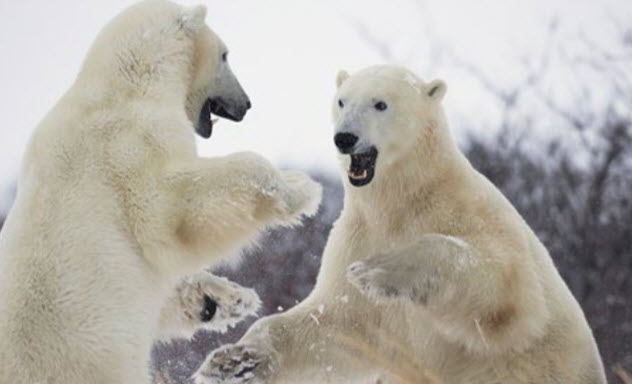
In the summer of 2011, a group of students went on an adventure expedition with the British Schools Exploring Society. The plan was for eighty people to spend a month in the Svalbard islands, halfway between the coast of Norway and the North Pole. But less than two weeks into the trip, the team was camping for the night when they were attacked by a starving polar bear. 17-year-old Horatio Chapple was killed. One of his friends would later need surgery to remove the bear’s teeth from his scalp after he punched it in the nose. Another boy’s jaw was smashed. The bear was shot by an expedition leader who was also seriously injured. The wounded team members were flown to mainland Norway and the expedition was ended immediately.
Chappele was a graduate of the exclusive English boarding school Eton College, and he was an aspiring doctor who planned to work on a cure for diabetes. The expedition team was criticized for their planning of the trip. There was no watchman on the night of the attack, and the emergency gun did not fire for four attempts because the safety was left on. Explosives were set up around the camp to stop polar bears but they did not go off, possibly because they were improperly set up. Norwegian officials ruled in 2012 that the incident could have been stopped if the team had slept in cabins instead of tents, but the organization in charge of the trip was not prosecuted for the death.
8 Allen Campbell Elephant Attack
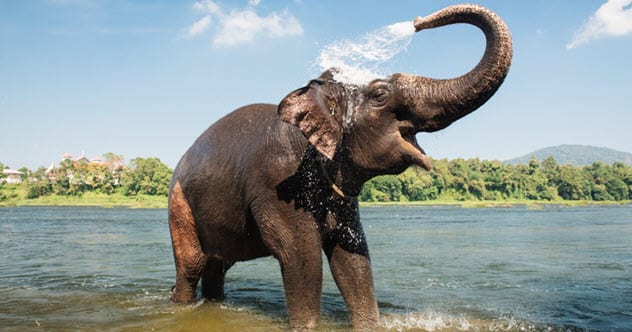
Allen Campbell was an experienced zookeeper who consulted on elephant rides across the country. He was described as a hard-worker by his colleagues, and his greatest dream was to train circus elephants. He made positive changes to the elephant program in Baton Rouge by insisting that the animals were fed everyday and their cages cleaned twice a day, but he was later fired from a different zoo after allegations that he had abused animals.
In August of 1994, Campbell was working at a circus show in Honolulu, Hawaii with an elephant named Tyke. Tyke was a female elephant from Mozambique that had previously been abused by her trainers. She had escaped twice in 1993 and gone on rampages, but had been re-captured both times. At this show in Hawaii, Tyke attacked groomer Dallas Beckwith in front of thousands of spectators, throwing him several times. Campbell rushed to help, but was knocked under her trunk and crushed to death. Tyke then ran out of the center and severely injured circus publicist Steve Hirano, who tried to hold the gates closed. After a half-hour chase through the streets, police officers shot Tyke eighty-six times and killed her. The case was complicated when 37-year-old Campbell was found to have alcohol and cocaine in his system during his autopsy. In the wake of this incident, the LA Times reported that elephant handling was the most dangerous job in the United States.
7 Richard Root Crocodile Attack
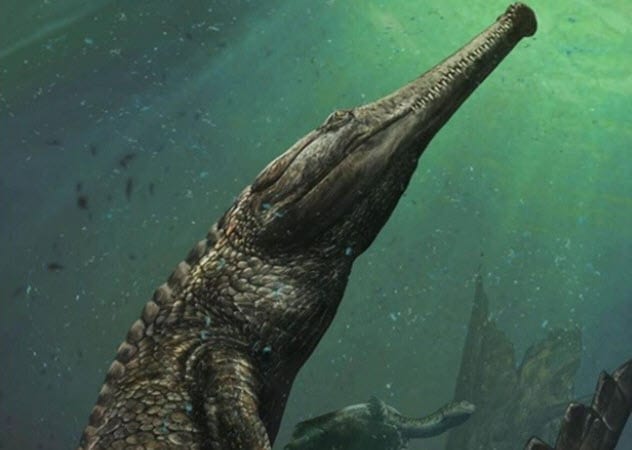
Dr. Richard Root was a college professor, chief of medicine at Harborview Medical Center, and a national infectious disease expert. He left his work temporarily to care for his sick wife and spiraled into depression when she passed away. But a few years later, he met his second wife and re-entered the medical field with fresh energy. Root and his new bride were invited on a two month medical program in Botswana run by the University of Pennsylvania. Many of the patients there were infected with HIV, and Root was reportedly overjoyed with his new job treating them.
The couple decided to go on a canoe tour of the Limpopo River in the Tuli Nature Reserve to observe local wildlife. They were each in individual canoes with two guides following them when a crocodile jumped up and pulled Root into the water. He never resurfaced. His wife and the guides witnessed the attack. Local experts told the medical program director that there had never been a crocodile attack in that river before, and that they had actually been worried about hippopotamuses. Root’s river guide was reportedly traumatized by the incident. The doctor helped to inspire many medical students, and had been voted Teacher of the Year of Yale Medical School in 1982.
6 Kali River Goonch Attacks
Goonch catfish are no ordinary river dwellers. They can grow to over six feet long and two-hundred pounds. Generally goonch feed on smaller fish, but in the Great Kali River they may have developed another diet. This river between India and Nepal is often used to dispose of human remains after cremation, and some believe this may have allowed these catfish to develop a taste for human flesh. In April of 1998, 17-year-old Dil Bahadur was dragged underwater in front of his girlfriend. Three months later, another boy was pulled into the river in front of his father. In 2007, an 18-year-old boy disappeared into the water. None of their bodies were ever found. During the last attack, witnesses saw an animal that they described as an “elongated pig”.
British biologist and fisherman Jeremy Wade investigated the cases for his television show River Monsters. He was initially skeptical that goonch catfish had been involved but after hearing that all the attacks occurred within five miles he became intrigued. Theories of whirlpools, crocodiles, and bull sharks were all disproven. Wade set up a funeral pyre as a trap, and caught a 161 pound goonch. He said of the fish, “If that got hold of you, there would be no getting away”. It was not proven whether the goonch that he caught was the one that committed the attacks, but the investigation did prove that human-sized fish were present in the river.
5 Tricia Wyman Wolf Attack
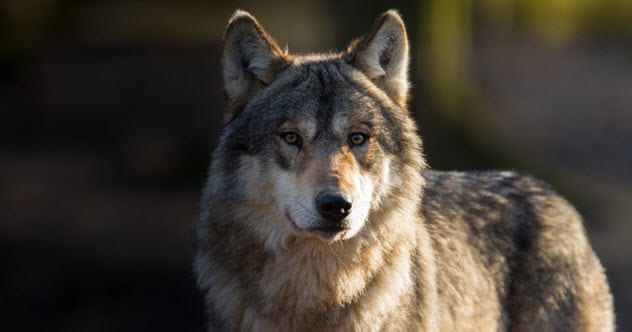
24-year-old Patricia Wyman was hired as a wolf caretaker and educator at the Haliburton Forest Wildlife Reserve in Ontario, Canada in 1996. Wyman was a wildlife biologist who had spent time at the reserve before, and began her job on April 14th. The reserve’s Wolf Center exhibit consisted of 15-acres of forest home to North American wolves that were born in captivity but not socialized with humans. Wyman had gone inside the forest once with her supervisor and once alone to feed the wolves.
On April 18th, she entered the enclosure alone and five adult wolves attacked her. Two other employees found her body later that day and called the authorities. Two police officers entered the enclosure and the wolves behaved aggressively, growling and circling them. Six officers were needed to remove Wyman’s body, which had multiple bite and tear wounds. Her clothes had also been removed by the animals. The five wolves involved in the attack were killed to be tested for rabies. Wyman was alone when she was attacked, so the exact circumstances of her death will never be known. But wolf expert Dr. Erich Klinghammer believed that Wyman entered the area to familiarize herself with the wolves, assuming they would keep their distance as they had in the past. She may have then tripped over the branches on the ground and the wolves attacked her when she appeared vulnerable. Fatal wolf attacks on humans remain extremely rare in modern North America.
4 Surinder Singh Bajwa Monkey Attack
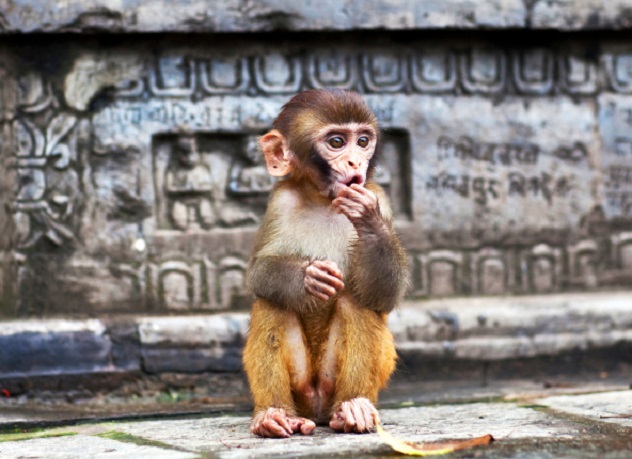
Surinder Singh Bajwa was an Indian politician who became the Deputy Mayor of Delhi. On October 20th, 2007, he was standing on the balcony of his home when he was attacked by a group of rhesus macaques. These small monkeys live all over Asia and generally weigh five to eight pounds. Bajwa fell from the balcony while trying to fight them off and died from head injuries a day later.
Monkey packs are a continuing problem in Indian cities. Monkey-catchers have been used to reduce their numbers, as well as trainers who use larger monkeys to intimidate the macaques. Urban expansion has worsened the problems. Macaques in particular often steal food out of peoples hands, take accessories off their bodies, and even break into cars. The Hindu religion forbids killing the animals and many Hindus feed them. Biting is a common problem, as well as disease, as close to 90% of macaques in Delhi have tuberculosis. Tighter pet restrictions have criminalized the use of the larger monkeys to scare macaques away. Alternate solutions including electric shock tape for buildings and sterilization campaigns have begun in Indian cities, but tens of thousands of macaques still plague Delhi today.
3 Chandra Nash Chimpanzee Attack
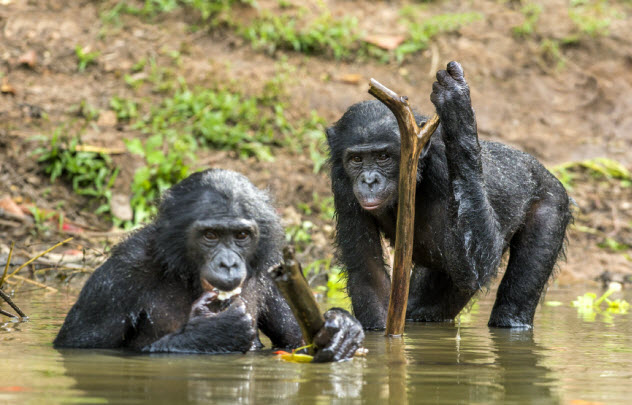
Travis was a male chimpanzee born in private captivity and adopted by Connecticut couple Sandra and Jerome Herold when he was only three days old. Travis grew up as a local celebrity, riding in the Herold’s tow truck, dressing himself, eating at the dinner table, watching baseball on TV, using the computer, and even driving a car. The Herold’s only human child has died in a car accident, so the couple pampered the chimp in her place. Travis usually got along well with his neighbors, but in 2003 he jumped out of a car and chased a man who threw something at him. A law was quickly passed in Connecticut forbidding pet primates over fifty pounds. Although Travis was over two hundred pounds, authorities allowed the Herolds to keep him because they did not believe he posed any threat. They were wrong.
On February 16th, 2009, Travis stole Sandra Herold’s keys and left the house. Herold called her friend Charla Nash to help bring him back inside. But when Charla arrived, Travis attacked her. Herold hit Travis with a shovel and stabbed him, but the attack continued. Herold retreated to a car and called the police, who arrived and killed Travis. Nash miraculously survived the attack, but lost her hands and most of her face, and suffered significant brain injury. Several years later, she received an experimental face transplant. Travis knew Nash, but she had a new haircut at the time and he may have become enraged because she was holding his favorite toy: a Tickle-Me-Elmo. Travis’ autopsy also showed that he had been given Xanax shortly before the incident, which has a possible side effect of rage and paranoia in humans.
2 Taylor Mitchell Coyote Attack
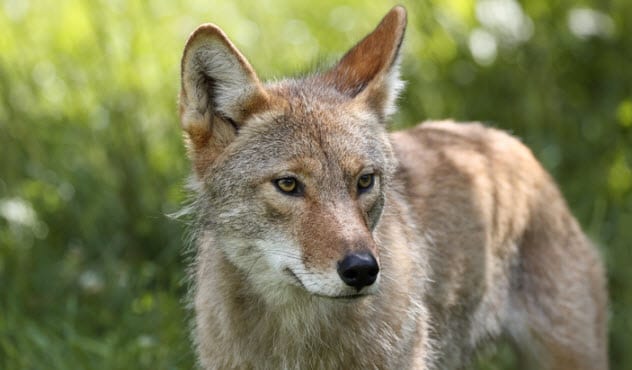
Taylor Luciow, better known as Taylor Mitchell, was a 19-year-old emerging Canadian folk singer who released her first and only album in 2009. She went on a solo tour of eastern Canada the same year. On October 27th, Mitchell had free time between tour stops and decided to go on a solo hike in Cape Breton Highlands National Park. An American couple would later report seeing two coyotes while they were hiking at the same time as Mitchell. The coyotes seemed to be unafraid of them. Six minutes later, the Americans heard what sounded like a woman or an animal screaming. They called the authorities at a phone booth in the parking lot, and told a group of four other hikers what had happened.
The four hikers went out on the trail and found Mitchell’s keys, pocket knife, and pieces of torn clothing. They also spotted blood on a bathroom door. Further along the trail, they found Mitchell on the ground with a coyote standing over her. She was bitten on most of her body and had serious head injuries but she was conscious at the time. Rescuers could not scare the animal away until a police officer arrived and fired at it. Mitchell was rushed to the hospital but died of blood loss. Experts theorized that the coyotes may have been rabid, had interbred with wolves or dogs, or were starving. It is possible that Mitchell may have disturbed a den or tried to feed them, but none of these theories could be proven. Mitchell was a nature lover and her family did not want any animals to be killed, but multiple coyotes were shot by wardens and identified as the attackers through blood on their fur.
1 Dawn Brancheau Orca Attack
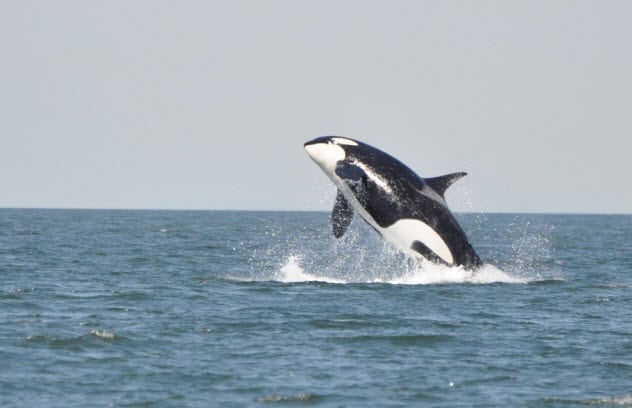
Dawn Brancheau fulfilled her childhood dream of becoming an orca trainer and began working at SeaWorld Orlando in 1994. By 2006, she had become a poster girl for the company and married a fellow performer. But her dream became a nightmare on February 24th, 2010. Brancheau was performing a dinner show with Tilikum, the largest orca at the park. At the end of the show, the whale grabbed her by either her ponytail or her arm and pulled her into the pool in front of the guests. Tilikum kept her underwater for 45 minutes while employees tried to distract him. They eventually coaxed him into a small tank where they could reach Brancheau’s body. Her scalp had been pulled off, her elbow and knee dislocated, her spinal cord severed, and other bones fractured. The autopsy found that she had died from a combination of drowning and blunt force trauma.
SeaWorld temporarily forbade trainers from entering the water with orcas after the attack and OSHA forced the ban to become permanent. Tilikum had previously killed two other people, 21-year-old trainer Keltie Byrne and 27-year-old park guest Daniel P. Dukes, who had hidden in the park after closing and then entered Tilikum’s pool. SeaWorld repeatedly tried to appeal court decisions that prevented water performances, but in 2014 the D.C. Court of Appeals sided with OSHA. Justice Brett Kavanaugh was the sole judge to side with SeaWorld. Brancheau’s death was heavily featured in the documentary Blackfish. Despite the negative attention from the film, Tilikum returned to performing in 2011. He later died of a bacterial infection in 2017.








